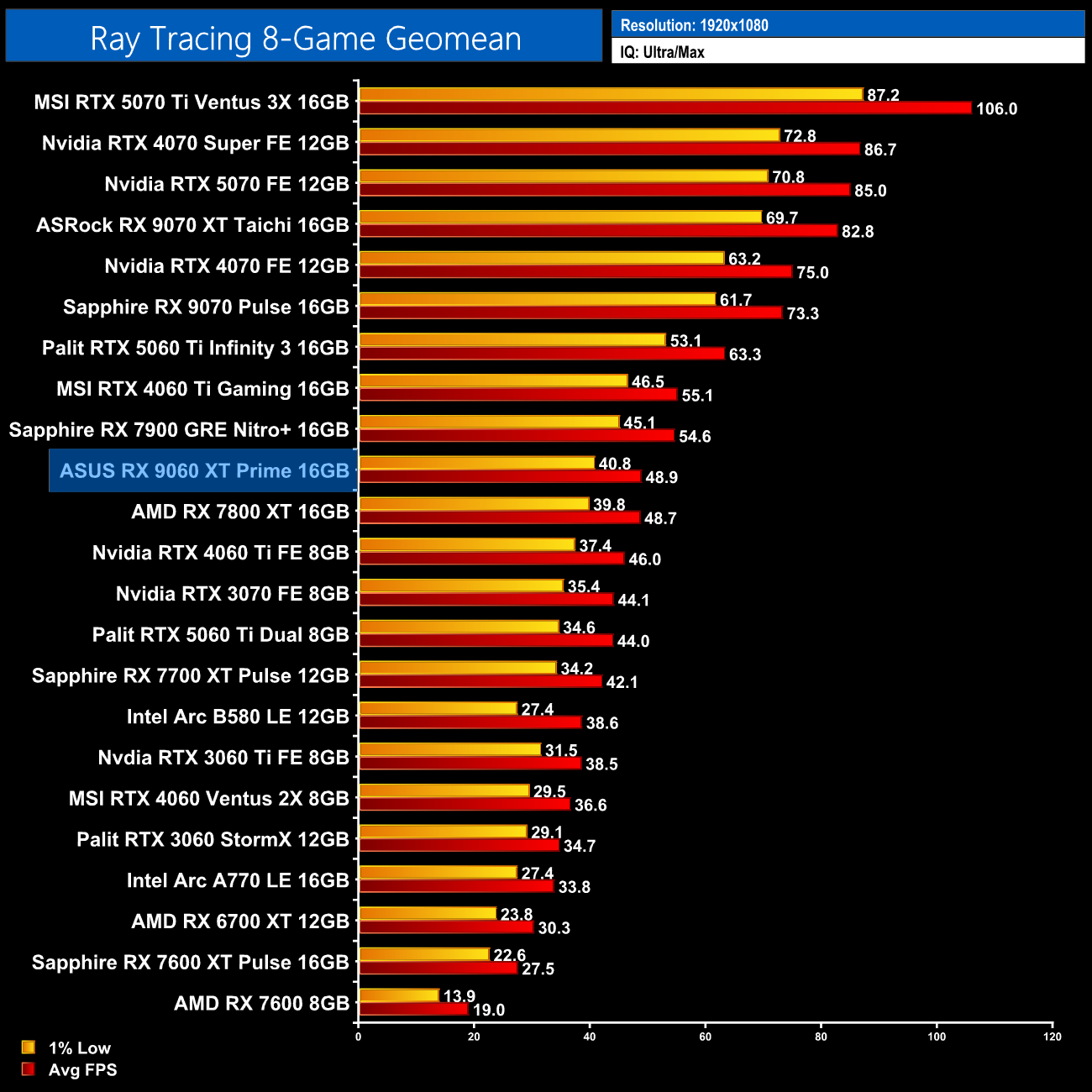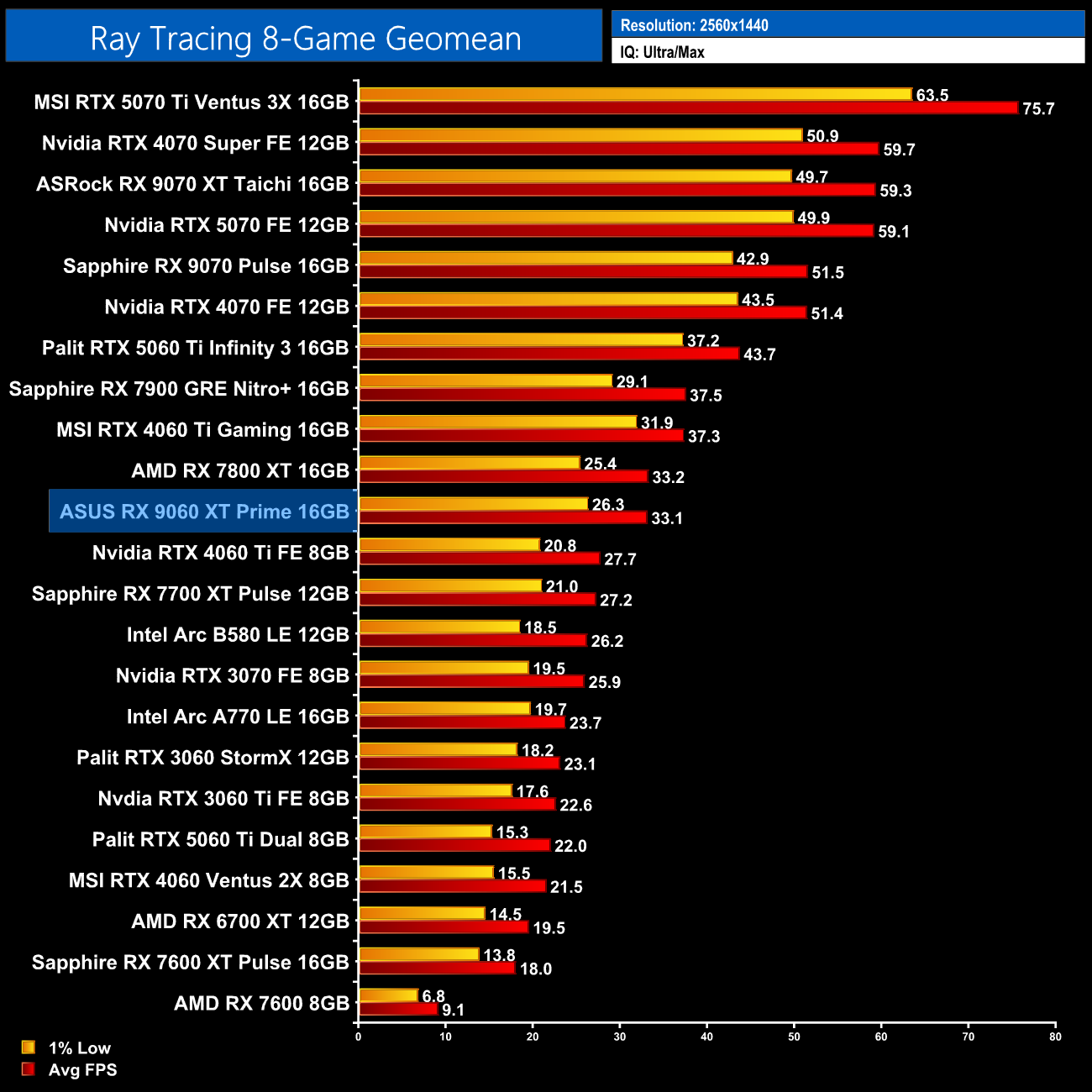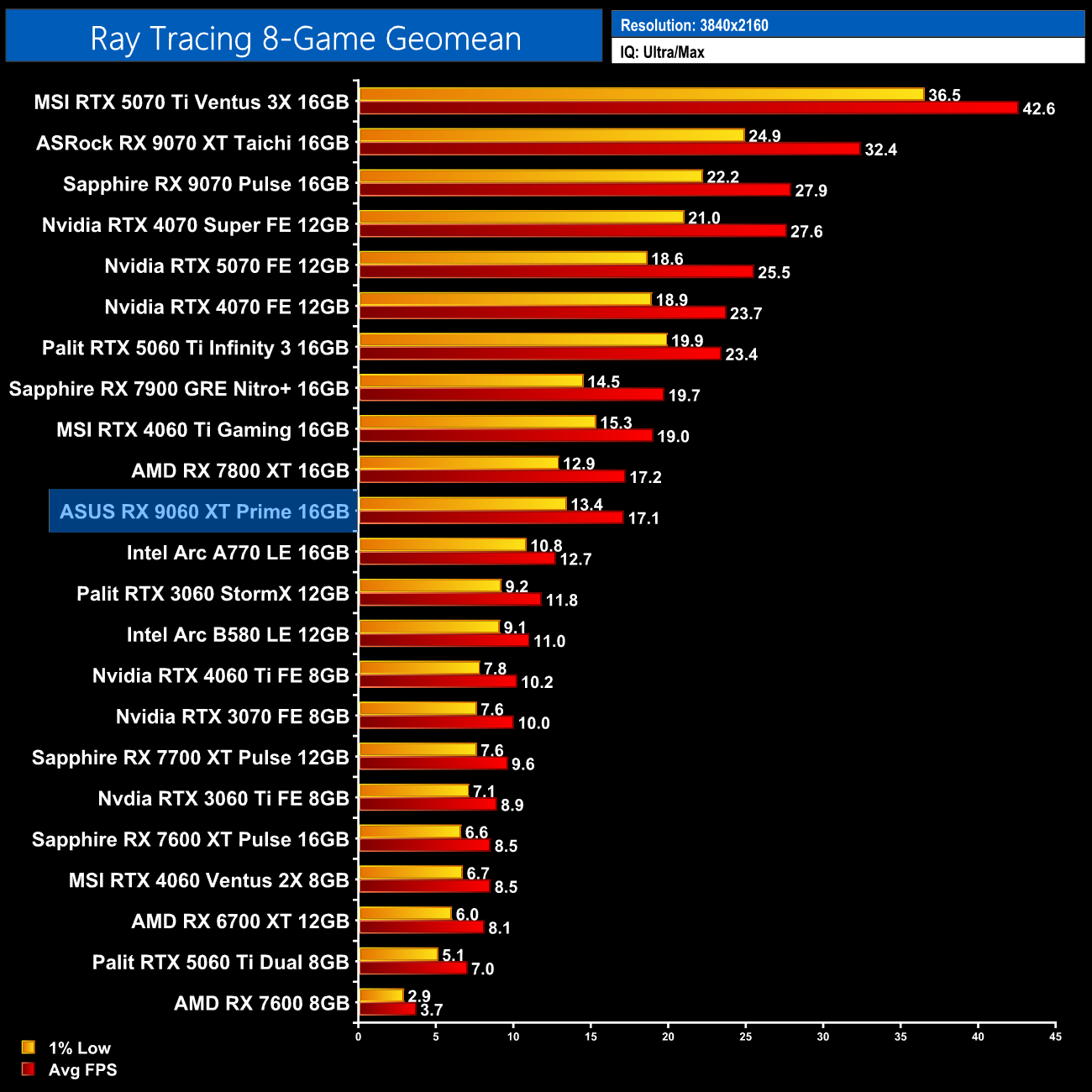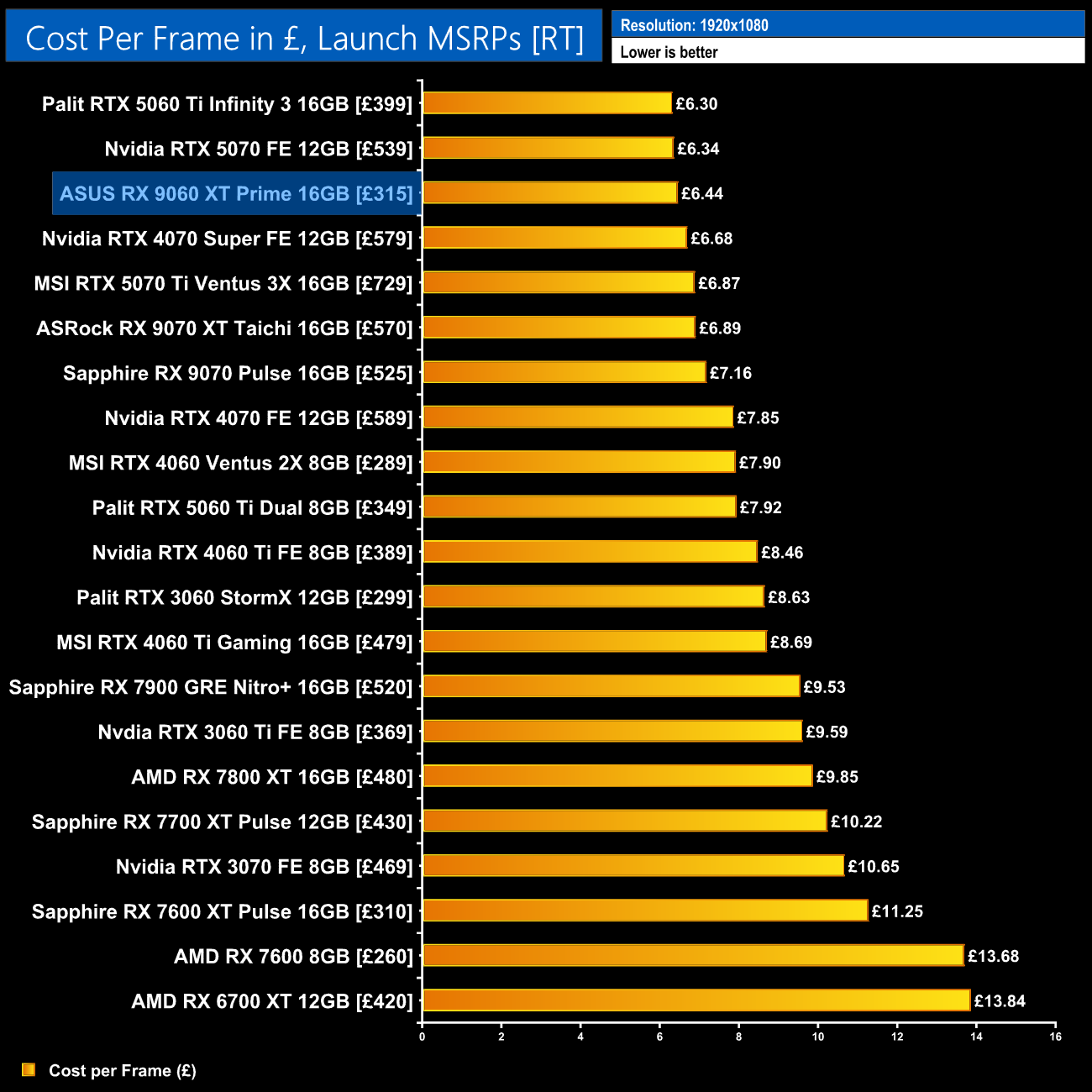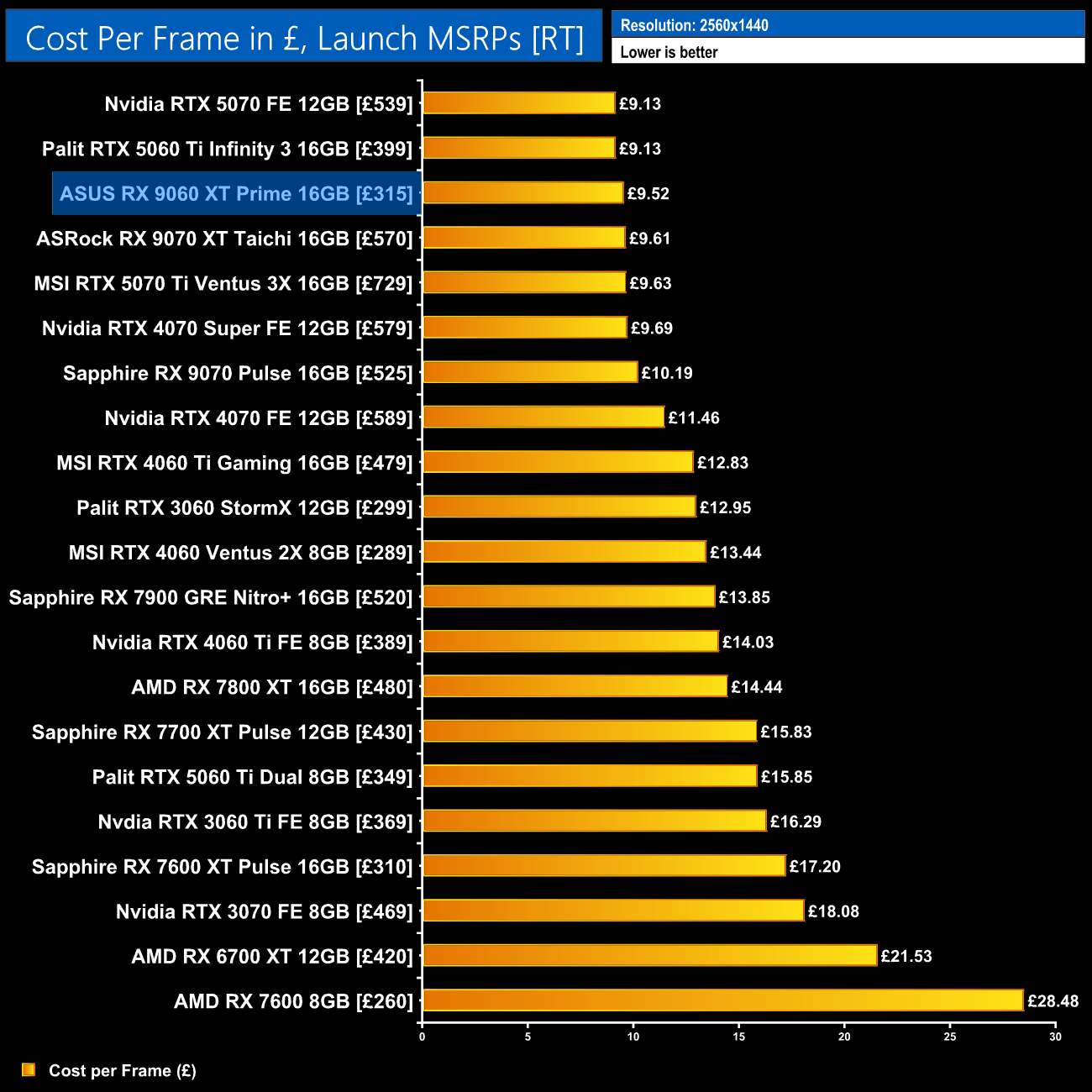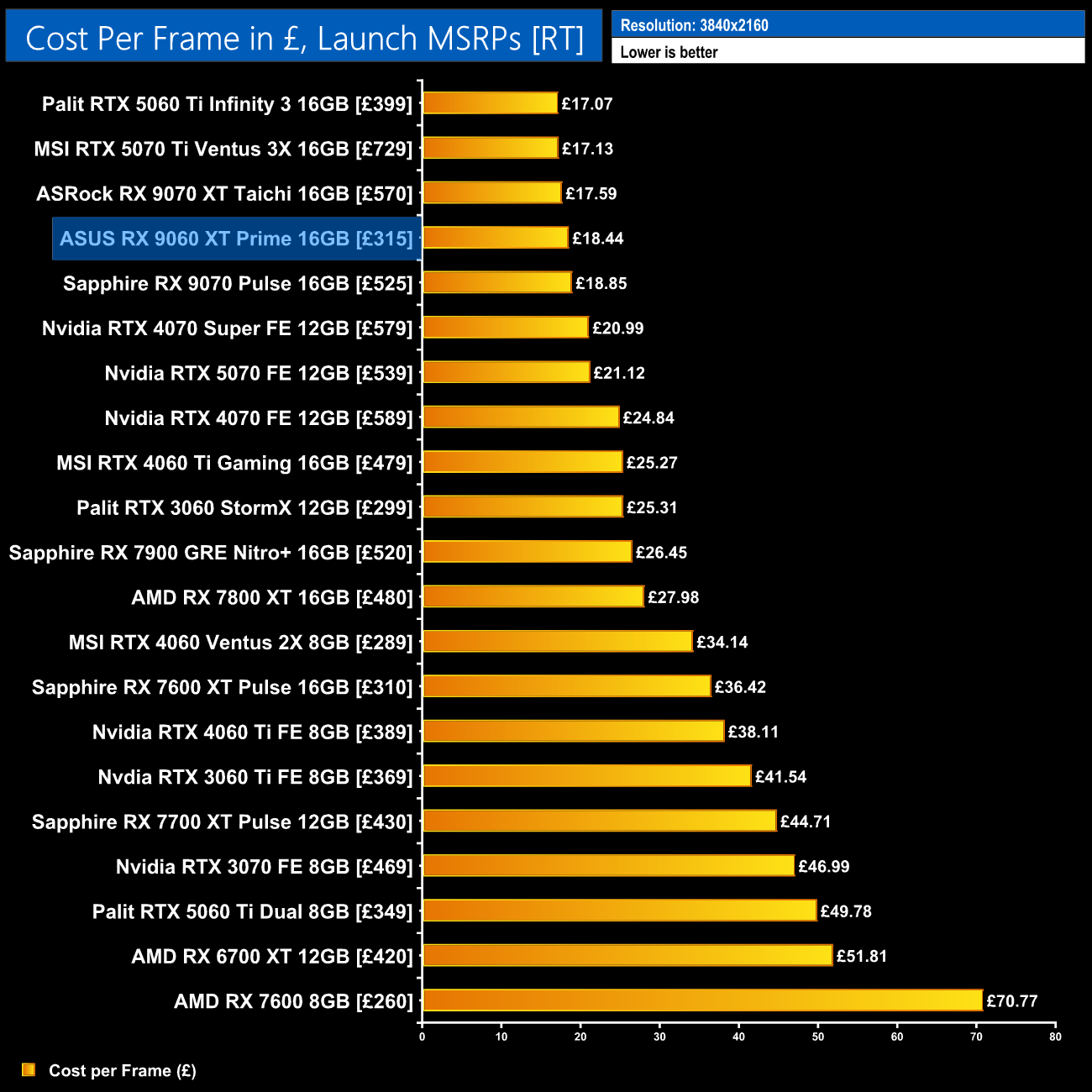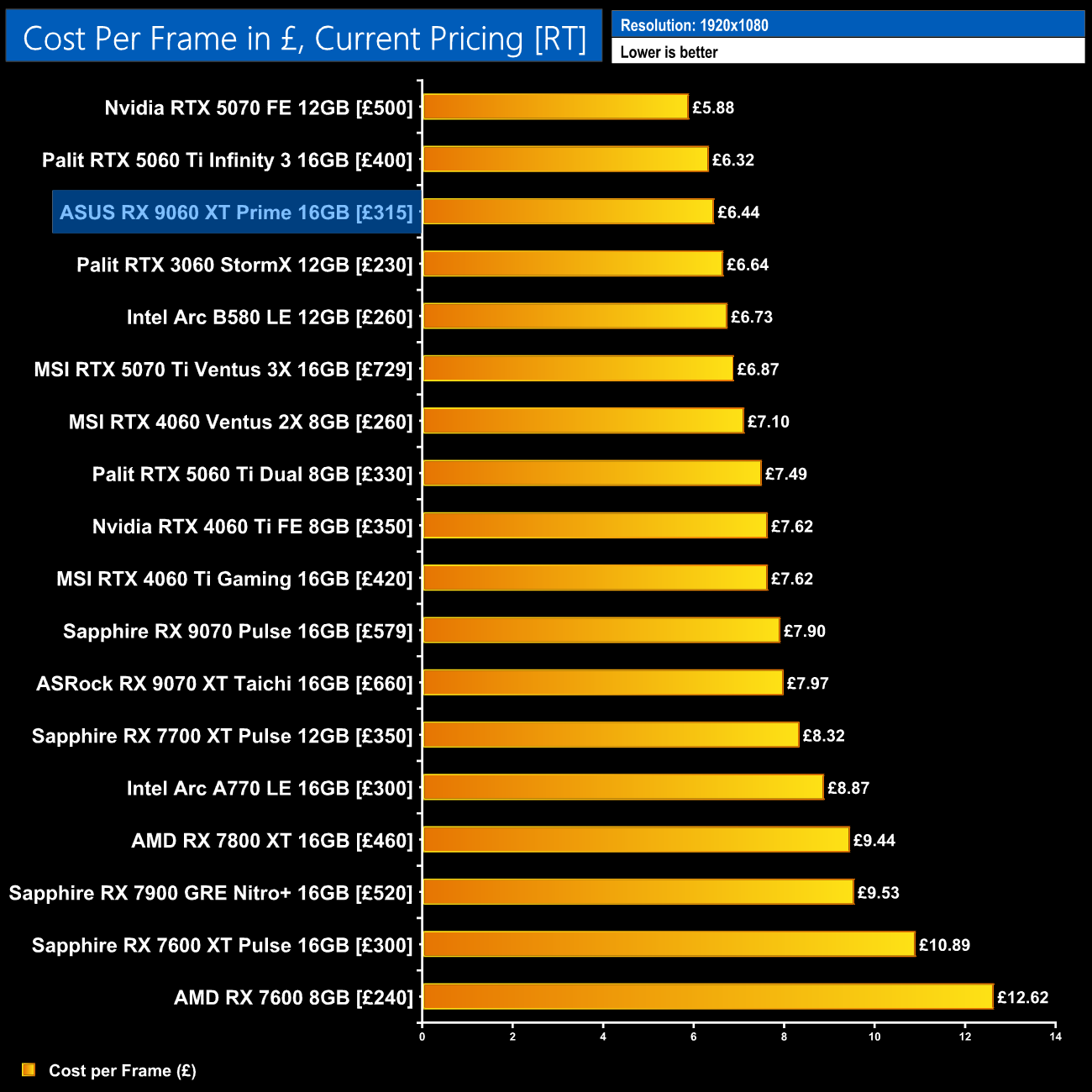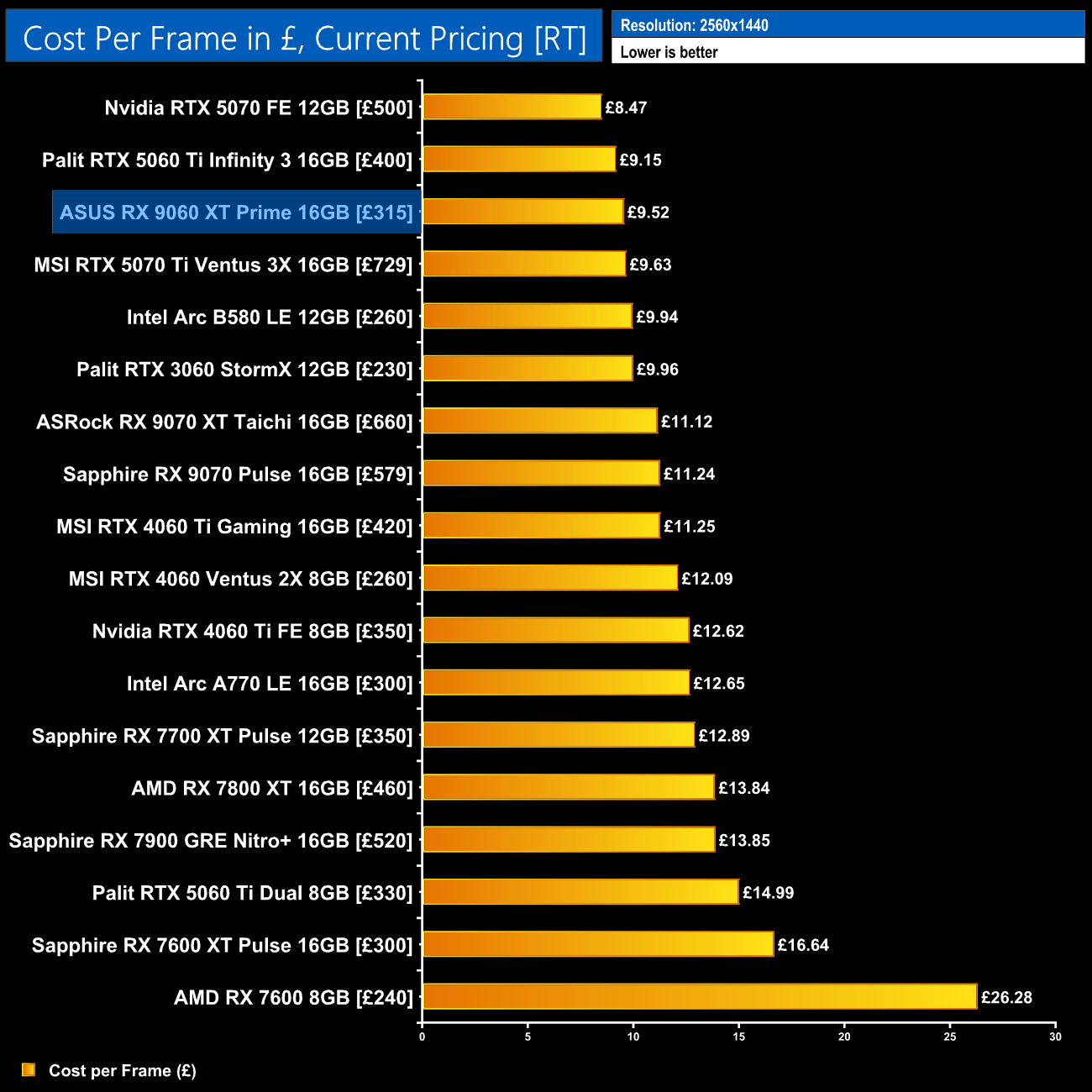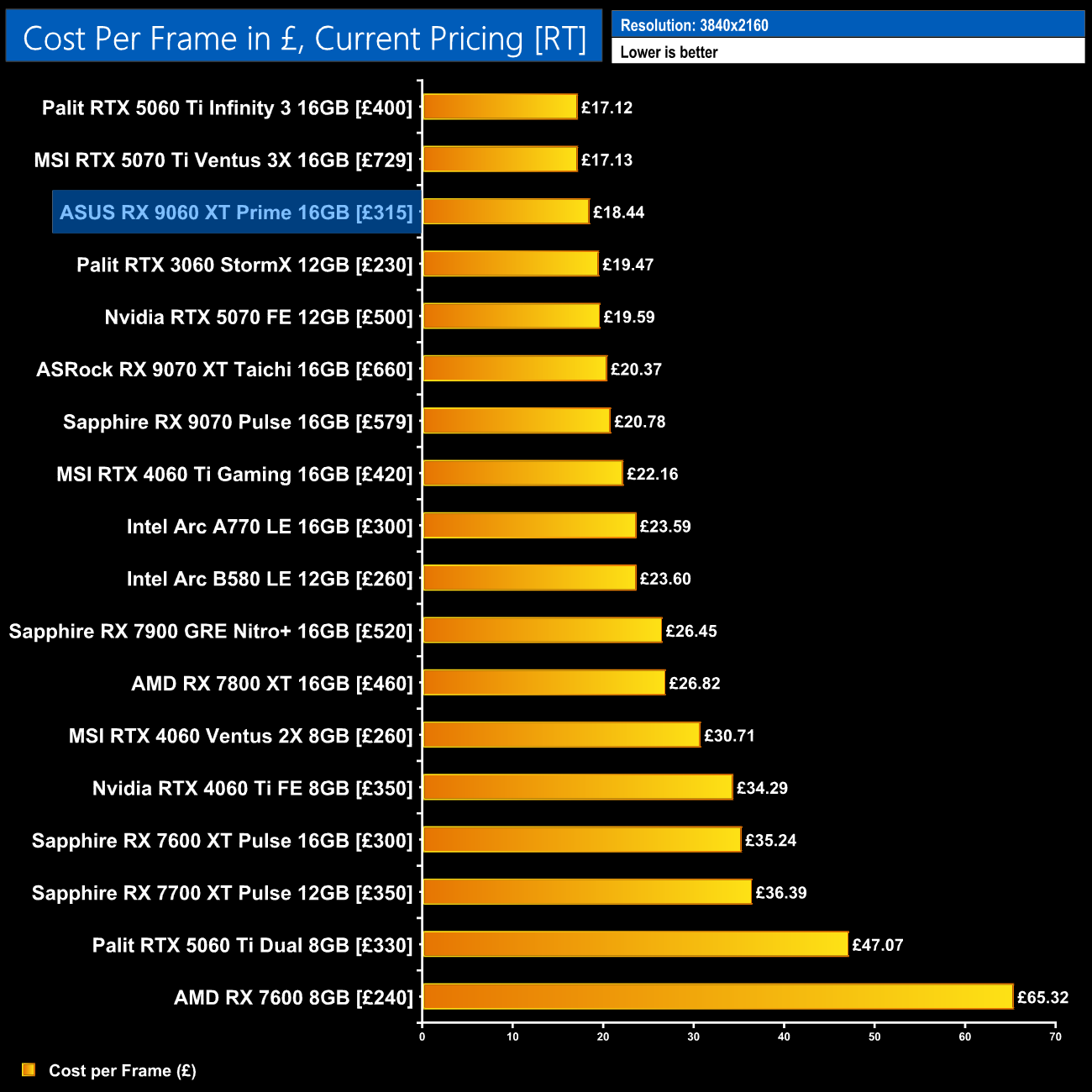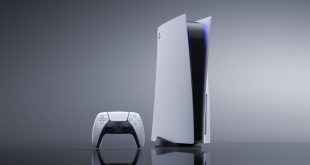Ray tracing 8-game average FPS
Here we present frame rate figures for each graphics card, averaged across all 8 ray traced games on test today. We've recently switched to using the geometric mean instead of the arithmetic mean for overall performance, given it provides a more accurate and balanced representation of GPU performance across different games.
Overall, there's no doubt that ray tracing has improved significantly from RDNA 3 – we can see that as the 9060 XT is on par with the 7800 XT, despite being the slower GPU in our rasterisation tests. It's also an eye-watering 78% faster than the RX 7600 XT, despite that number being closer to 38% for our raster benchmarks.
However, there's no getting away from the fact that Nvidia still has the upper hand in this area. Compared to the 5060 Ti 16GB, the 9060 XT 16GB is some 23% slower, though it does still average a higher frame rate than the 5060 Ti 8GB model due to its superior VRAM capacity.
Cost per frame, launch MSRP data
Please note this only compares ray traced performance and value.
Despite that, the 9060 XT 16GB is still a very compelling option for ray traced cost per frame – it's not quite at the top of the chart, but this is so much better than anything we saw from the RX 7000 series.
Cost per frame, current pricing data
The same goes for the data based on current pricing – the RTX 5070 at £500 is the ray tracing value champ, but the 9060 XT 16GB is still very compelling at £315.
 KitGuru KitGuru.net – Tech News | Hardware News | Hardware Reviews | IOS | Mobile | Gaming | Graphics Cards
KitGuru KitGuru.net – Tech News | Hardware News | Hardware Reviews | IOS | Mobile | Gaming | Graphics Cards


